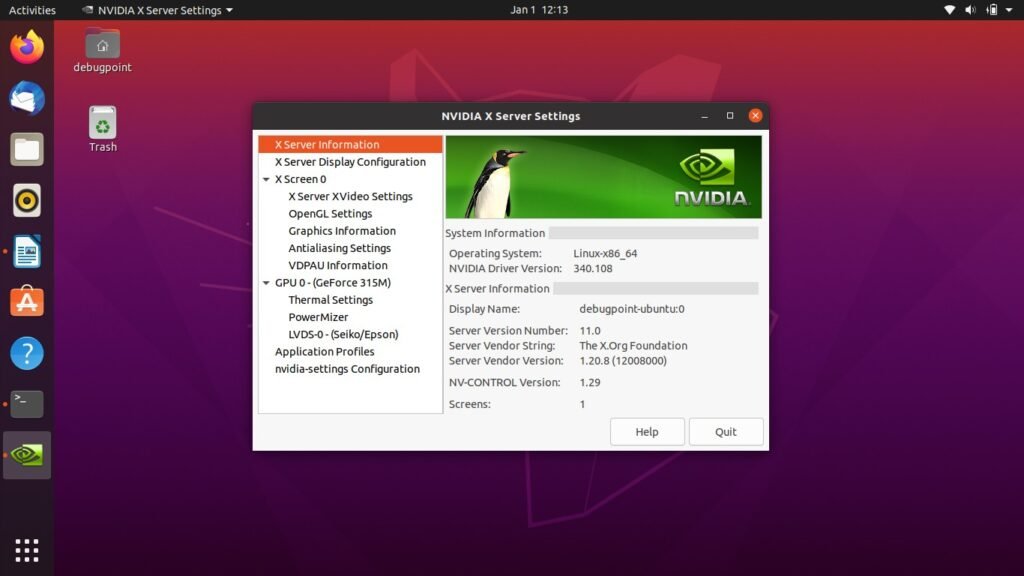

- #How to install latest nvidia drivers arch linux how to
- #How to install latest nvidia drivers arch linux update
- #How to install latest nvidia drivers arch linux driver
- #How to install latest nvidia drivers arch linux software
X(7), Xserver(1), mkfontscale(1), xfs(1), xset(1) sh: /usr/bin/xset: No such file or directory. This is the opposite of true in fact Arch packages are, on the whole, far closer to their upstream counterparts than the same packages from other distros, where it is common for huge divergences to be made from the upstream defaults.

0 “Publication of this Working Draft for review and comment has been Searchable Linux Syscall Table for x86 and x86_64. testing that myself has resulted in xset and xinput
#How to install latest nvidia drivers arch linux software
If you want to debug software or look at a core dump you will need the debugging symbols. Before I'll try with a complete reinstall, I wanted to ask if somebody has an idea what this could be. Another option is using the Docker Containers provided by Nvidia, as featured in the link below.Xset arch. So this solution is to be regarded as a temporary workaround. Since the hardware is fairly new, not all packages are available through the widely used package managers.
#How to install latest nvidia drivers arch linux how to
This short tutorial shows how to set up TensorFlow GPU support for an RTX 30 series GPU on Arch Linux. You can do this by editing the following config file with an editor of your choice: $ sudo vim /etc/nfĪdding the identifiers “nvidia” and “python-tensorflow-cuda” to the “IgnorePkg = … ” line will prevent pacman from updating these packages without explicitly asking you: IgnorePkg = python-tensorflow-cuda nvidia Summary
#How to install latest nvidia drivers arch linux update
To prevent accidentally breaking the setup through a system update via pacman, I recommend adding some or all of the packages to the ignore list of pacman. But I recommend staying within the tested Versions of the table. This will install TensorFlow alongside the necessary CUDA and cuDNN Versions, which should work just fine together.Ĭontrarily to the compatibility table from TensorFlow, this also works with Python 3.9 in my case. So what we will do is to install these packages via pacman: $ sudo pacman -S python-tensorflow-cuda As mentioned before, we could just install CUDA 11.0 via conda, but conda does not feature cuDNN 8.0 yet. We already know that we need at least CUDA 11.0, so this means we will also need at least TensorFlow 2.4.0, Python 3.6 to 3.8, GCC 7.3.1, and cuDNN 8.0. In the Linux/GPU section, we will find the following table: Version TensorFlow, Python, GCC, and cuDNN Versionįinally, we can have a look at the compatibility table. CUDA 11.0 is indeed available in conda, but we will see why this will not work in the next section. This is usually the way to go since we do not have to worry about incompatibilities and conflicts with other packages and installations. Generally, it would be cleaner to set up a virtual environment with anaconda, encapsulating python and all packages we need for our deep learning setup into one save space. Having a look in the 450.36.06+ column of the table, we can see that we need at least CUDA 11.0. Garuda Linux is a rolling release distro based on Arch Linux, which ensures always getting the latest software updates.
#How to install latest nvidia drivers arch linux driver
In another table from Nvidia’s website, we will find out which CUDA Version we need, according to the driver we have to use. We can install the drivers via pacman (if not already done) by typing: $ sudo pacman -S nvidia CUDA Version Nvidia offers a list of CUDA compatibilities as shown below: Hardware GenerationĪfter having a quick look into the table, we will see that we need to use at least Nvidia driver 450.36.06. Trying to figure out systematically which versions of the packages above we need, I suppose we start by determining which driver we need for a Nvidia Ampere GPU. So what do we need? As stated on the official TensorFlow support site, we need the following drivers and packages:īut which versions of these packages do we need? Let’s start with the version of the Nvidia drivers since that is set by the GPU we want to use. Furthermore many workstations use Ubuntu rather than Arch Linux, so finding a tutorial for my setup was challenging. Since the RTX 30 series was released in November 2020, fairly new drivers and versions are necessary to take advantage of CUDA for deep learning. I recently set up TensorFlow with CUDA on a system with a new Nvidia Ampere GPU.


 0 kommentar(er)
0 kommentar(er)
